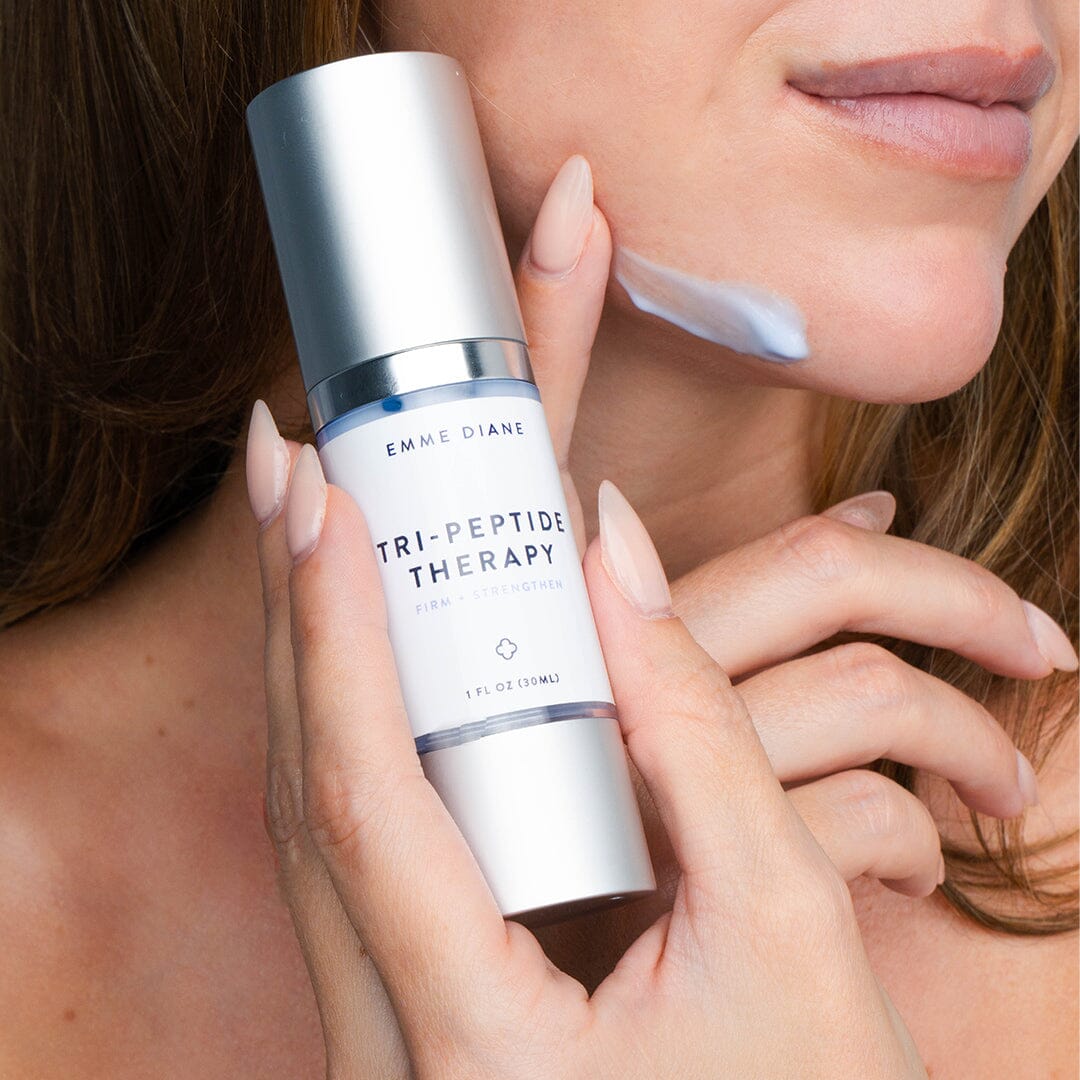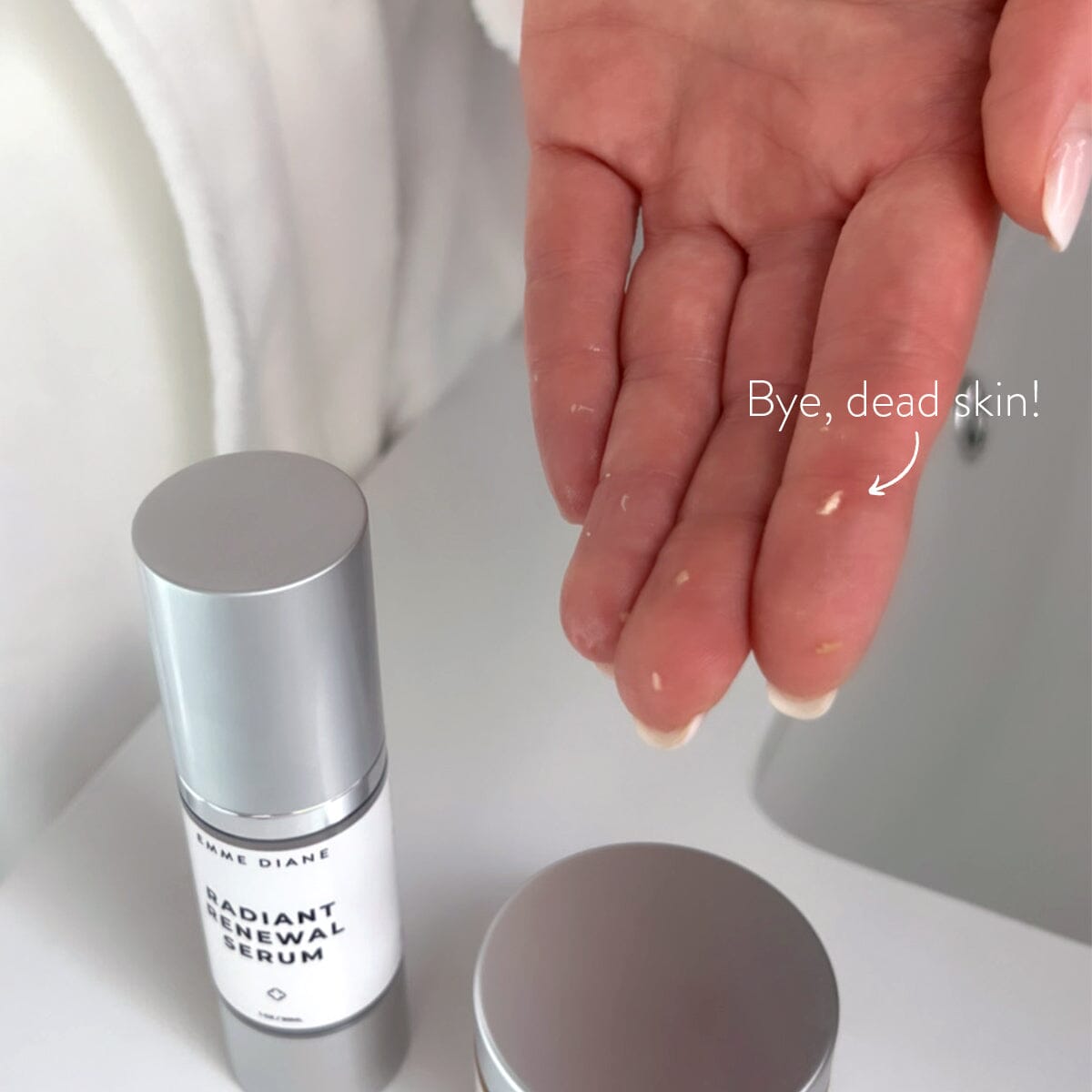SPF, PA+++, and Everything Else You Need to Know About Sunscreen
by Emily Linehan on April 03, 2022
Sunscreen is arguably the most important part of any skincare routine. Even if you’re already diligently wearing sunscreen, understanding why it’s important and what to look for can be kind of tricky. Below I'll dive into everything you need to know, including why sunscreen matters, what terms like “PA+++” and “Blue Light Protection” really mean, and how to properly apply your sunscreen!
Sunscreen: What It Is and Why You Need It
To put it simply, sunscreen is your best defense against aging. This is because with the right ingredients, sunscreen protects your skin from the extreme damage that can occur from sun exposure. Not only can sun exposure result in sun spots or hyperpigmentation, but the sun also breaks down collagen and elastin, resulting in fine lines, wrinkles and uneven pigment. Something else that’s scary about sun damage? It isn’t immediate. Sun exposure that occurred at youth likely won't appear until your early 30's or even beyond that. This is why it’s imperative that you wear sunscreen every single day (yes, even in the winter and on cloudy days!).
Choosing the Right Sunscreen
There’s an overwhelming amount of options on the market, but to pick the best option you first need to understand what types are available and what those claims like “SPF” and “PA+++” mean.
Types of Sunscreen
There are two main types of sunscreens: Chemical and Physical/Mineral.
Chemical sunscreens (oxybenzone, avobenzone, octisalate, octocrylene, homosalate, or octinoxate) undergo a chemical reaction with the UV rays, absorbing them and then releasing the extra energy as heat. The sunscreen's chemical reaction is only for a limited amount of time, therefore you will have to reapply it every 2-3 hours to ensure you are still protected.
“Physical” or “Mineral” sunscreens (zinc oxide or titanium dioxide), like my Tinted Mineral SPF 40 and Pure Protection SPF 40, create a barrier of protection that reflects and scatters the UV rays. What is great about these sunscreens is that as long as the barrier is intact, meaning you haven't sweated or wiped it off, you will not need to reapply as frequently. However, it is always a good idea if you are intentionally exposing yourself to the sun (beach day, boat ride, sports event, etc.) to reapply every 2-3 hours to ensure you are fully protected.
While zinc oxide and titanium dioxide are marketed as physical sunscreens, to be accurate, both are inorganic chemical compounds with varying chemical properties. This means they are also technically chemical sunscreens.
What Claims like "SPF" and "PA+++" Mean
This is where things can get a bit confusing, but here are some things to keep in mind:
SPF stands for Sun Protection Factor and is how protection from the sun’s UVB rays is measured. The basic calculation for SPF is based upon how many minutes of sun exposure it takes for your skin to burn without sun protection. The flaw with this calculation is that it doesn’t account for elevations, locations, the time of day when the sun's rays are the strongest, how much sunscreen is applied, or a multitude of other factors. So, to get the most protection you should choose the highest rating of SPF, right? Wrong! This part is surprising to many, but an SPF 30 vs SPF 40 offers less than 1% more protection. To simplify, I recommend that you wear a minimum of SPF 30 and reapply every 2-3 hours (sooner if you’ve been in the water) to protect your skin. Both our Tinted Mineral SPF 40 and Pure Protection SPF 40 offer broad spectrum protection that is perfect for everyday use and for those days at the beach or poolside!
PA+++ is something you may have heard about recently, but what does it mean? In short, this is a grading system that focuses on UVA testing (the “aging” UV rays). If you notice PA+ on your label, the product offers some protection against UVA rays, which are the “aging” rays that cause damage and cancer. As the symbols increase, so does the level of UVA protection. So in this instance, the higher ratings such as PA+++, is better in terms of sun protection. The great news is that our Tinted Mineral SPF 40 is rated PA+++!
Broad Spectrum might be the easiest one to understand as it simply means that a product protects against both UVA and UVB rays.
Blue Light Protection is a term that has recently been generating a lot of interest online, and yes, it is referring to the blue light you’re thinking of! If you aren’t familiar with the term, blue light, or high-energy visible light (“HEV”), is, as the name describes, a type of visible light. We are exposed to this type of light from the sun, but more recently there has been a lot of buzz regarding the exposure generated from our computers, smartphones, and other electronic devices.
As I discussed with New Beauty, studies have shown that blue light may be damaging to the skin, leading to issues such as hyperpigmentation, under-eye darkness, and premature aging. Luckily there are ways to protect your skin, one of which includes using a sunscreen formulated with zinc oxide, such as our Tinted Mineral SPF 40 or Pure Protection SPF 40. The zinc oxide found in both of these sunscreens offers blue light protection which is why I recommend applying it every day, even if you don’t plan on going outside, to ensure you are protected from blue light exposure! In addition, you can use antioxidant rich products, such as my Brilliant-C Serum, and take other preventative measures like making the switch to LED bulbs and using a blue light shielding screen protector, to minimize the effects of blue light exposure.
Proper Application
Now that you know what you’re looking for in a sunscreen, understanding proper application is equally as important to ensure you’re protected.
How Much to Apply
In order to achieve true Sun Protection Factor (“SPF”) you need to apply 2 milligrams of sunscreen per square centimeter of skin.
For the face, aim for a nickel size amount. Or, if using Emme Diane Tinted Mineral SPF 40 or Pure Protection SPF 40, you will need 2 full pumps.
For the body, you should apply about 2 tablespoons, or if you’re a visual person, about one shot glass full. If you are using a spray sunscreen, getting the exact amount can be tricky. As a general rule of thumb ensure that you apply it generously to your body until an even sheen appears on your skin, then use your hands to blend it in.
How to Apply
How you apply your sunscreen matters more than you might think!
To ensure you get an even barrier of sun protection on your face, I always recommend using my press/pat method when applying a physical sunscreen. To do this, first warm the sunscreen between your fingertips. Then, with a pressing action, evenly distribute onto the skin and lightly feather until blended. This is similar to how you would apply foundation!
If you rub or massage your sunscreen on like a lotion the application might be uneven resulting in parts of your face being vulnerable to the sun.
#EmmeTip: Mix 1 pump of Tinted Mineral SPF 40 and 1 pump of Pure Protection SPF 40 to get a gorgeous glow that makes your skin look flawless, while also vigilantly protecting against the sun's harmful rays!
When to Apply (& Reapply!)
Sunscreen should be applied every morning as the last step of your skincare routine and before applying makeup. As a reminder, even if you aren’t planning on leaving your house, sunscreen still should be applied to ensure your skin is protected from the blue light we discussed earlier.
As far as reapplication, that depends on what type of sunscreen you’re wearing as well as environmental factors. As we discussed previously, chemical sunscreens have a short-lived chemical reaction, therefore they must be reapplied every 2-3 hours. This is true even if you’re wearing makeup or on a normal day without swimming or sweating.
When it comes to facial applications I typically recommend zinc oxide/titanium dioxide sunscreens. With these types of sunscreens, such as our Tinted Mineral SPF 40 and Pure Protection SPF 40, a physical barrier is created, therefore the protection lasts as long as it is intact on the skin. This means that on an average day, without sweating, swimming or wiping it off the face, the protection with zinc oxide/titanium dioxide sunscreens will generally last all day. Keep in mind, these types of sunscreens still need to be reapplied after swimming or towel drying, and it's good practice to reapply every 2-3 hours when you are outside as you may have sweated or wiped it off unintentionally.
In addition to sunscreen, be sure to take additional measures to protect your skin from the sun. This can include staying in shaded areas, wearing protective clothing, and enjoying foods that help protect your skin from UV damage such as fish rich in omega-3’s and dark leafy greens.
xoxo,
Emme


